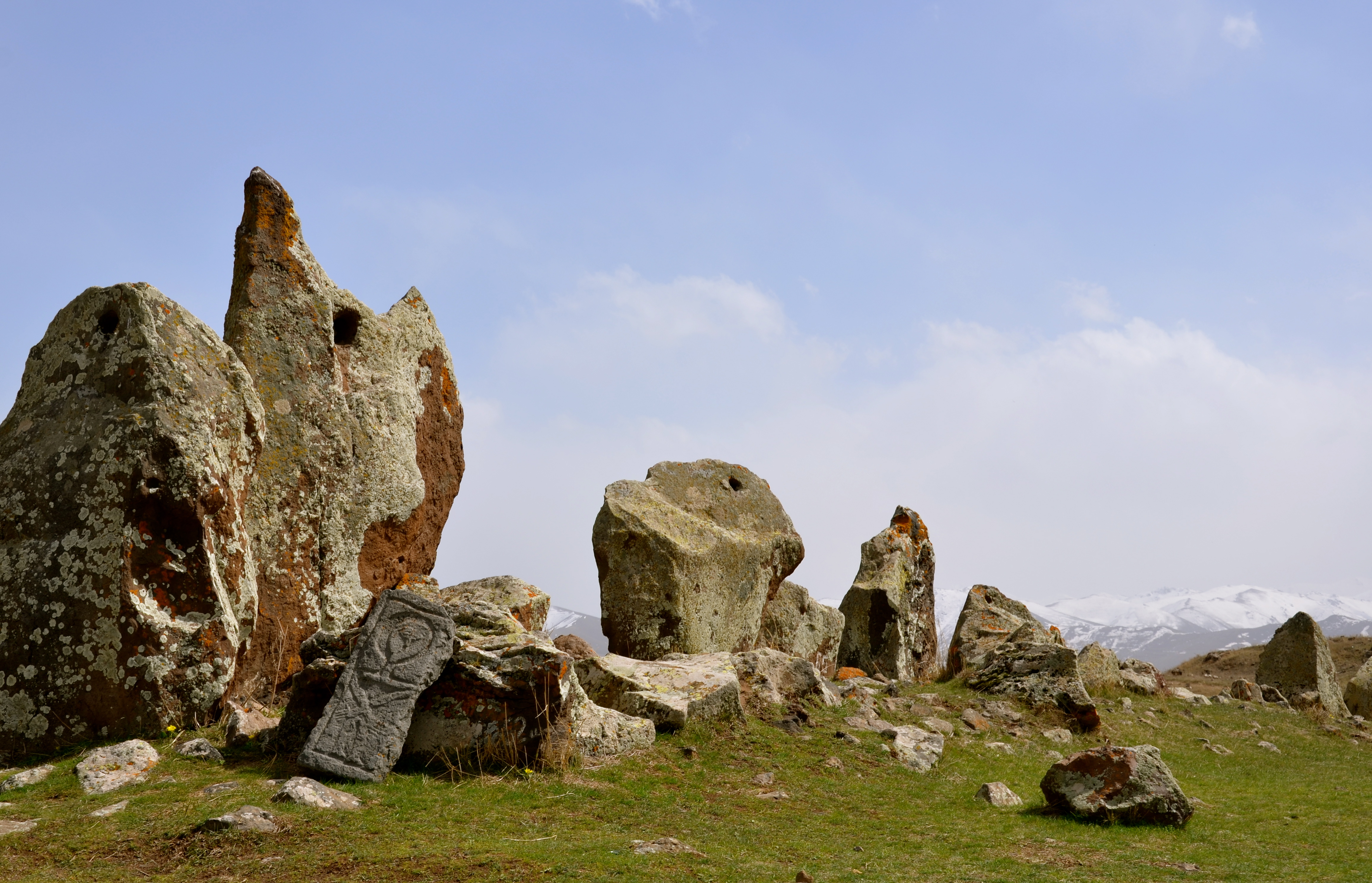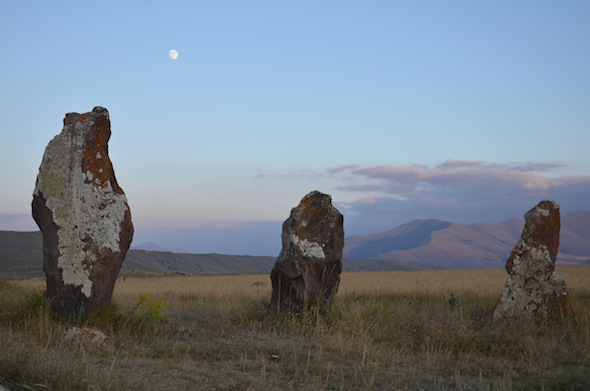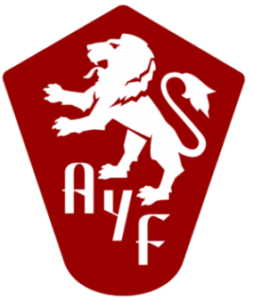I Was Told There’d Be It ?
By: Ani Sarkisian
The way I remember it, the first time I went to Karahunj there wasn’t even a road. It was my very first time in Armenia, everything was brand new, and the constant overload of sensory experience for three months renders my memory suspect when it tells me that we veered off the main highway into a field and all we had to guide us was our driver’s infallible sense of direction (and really, when it’s your first time in Armenia and you’re the only kid who doesn’t speak the language, you want to find the guy with the infallible sense of direction). I was tagging along with a couple of friends on their AYF excursion, knew nothing about Armenia, and I think when I heard someone mention “Stonehenge,” I rolled my eyes.

By now, you may have heard of Karahunj (or Zorats Karer). After being featured in a History Channel documentary as well as a segment on CNN (videos that were subsequently shared on many an Armenian Facebook wall), you may recognize it asArmenian Stonehenge. The more than 200 stones in the layout have been standing sentinels at the edge of Sisian in the Syunik province for around 7500 years, making it 4500 years older than Stonehenge in the UK. Some of the stones weigh more than 50 tons, and 85 of them have man-made holes that form calculated angles when connected, drawing the eye to certain points in the sky.
International teams of archeologists, astronomers, and historians have competing theories to account for what it could exactly signify. It could be the world’s oldest observatory and calendar. Another theory, taking changes in the tilt of the Earth’s axis into account, is that the stones appear to line up with the constellation Cygnus (a swan or a vulture, depending on where you’re from), which symbolized an entry into the stars above; the idea is that our ancestors were possibly trying to tell us where we came from. There’s also the ominous thought that our ancestors were trying to leave a message, warning us of cataclysmic dangers that can be read in the stars. There’s even a theory that the first inhabitants of Great Britain were Armenians, meaning they brought their knowledge of astronomy and the concept of a Stonehenge and the tradition of khachkars to Europe. Supporting this theory is the fact that “kar” means stone in Armenian, and “hunge” translates to something like “bunch,” but the word “henge” has no origins in the English language, making its existence in the name Stonehenge all but arbitrary without the Armenian link.
Of course, I had no idea about any of this on my first trip to Karahunj. Our motley crew also included my host sister and a hitchhiking soldier on his way home, and we were all too worn out and too busy chattering to each other to ask too many questions about what we were about to see. I remember staggering out into the approaching twilight and fog, unsure of what I was looking for. “Stonehenge,” I thought to myself, and started searching for rocks in the shape of a pi sign. My eyes identified a seemingly random collection of rocks that slowly revealed a pattern, snaking into the distance and towards a central point. I remember the first stone I saw with a hole and feeling my heart thud.
In the distance, one of the stones broke itself in half and walked towards us; it took me a minute to realize it was a man who had been sitting out there all alone and reading a book. He approached our group and greeted us. My host sister, Rosa, whispered a translation and it turned out the young man was from Yerevan and was studying archeology. Because there were no signs or guides to explain the stones and their mysteries, he spent his summers sitting there waiting. “For what?” I asked. Rosa relayed my question, and the young man’s eyes lit up. He answered, Rosa smiled, and she grinned and turned to me. “For you, of course!” He proceeded to walk us through and explain the theories, placing his hands on the stones with respect and affection. He spent he summers out there in hopes that someone, or some group, would make the trip so that he could share his knowledge and revel in the enigmas of Karahunj.
Nowadays, UNESCO signs and a tourism kiosk give visitors a basic idea of what they’re seeing. But when I think of Karahunj, I always think of that solitary man in a nondescript field surrounded by the wisdom of our ancestors, patiently waiting for someone to join him: to stare at our past in wonder, to share the secrets of the ancients, to speculate, and to remember that life is mostly a mystery.



Leave a Reply
Want to join the discussion?Feel free to contribute!